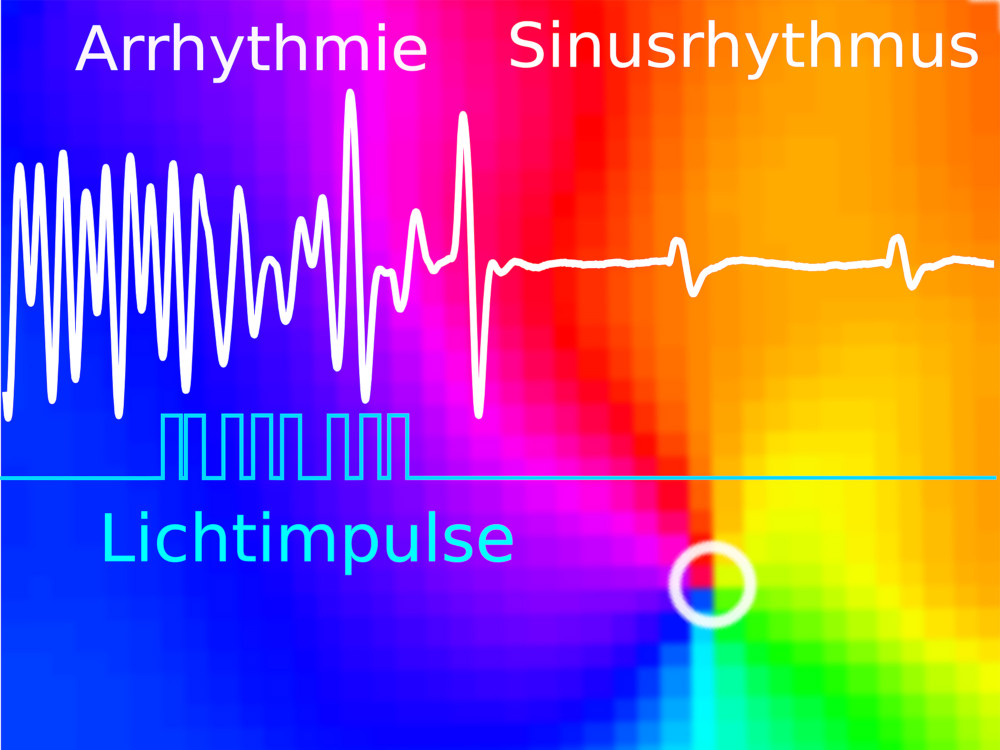
07 May Gentle defibrillation with optogenetics
Cardiac arrhythmias are responsible for around 15 to 20% of deaths worldwide every year. In acute and life-threatening cardiac arrhythmias, defibrillators can be used to restart a regular heartbeat. A strong electrical impulse briefly stops the heart’s activity so that it can then be restarted in an orderly fashion. While this treatment can be very effective in saving lives, the strong electrical impulses can also have negative side effects such as damage to the heart tissue or severe pain.
A research team from the Max Planck Institute for Dynamics and Self-Organisation (MPI-DS) and the University Medical Center Göttingen is now using light pulses as a model for electrical defibrillation. “We have developed a new and much gentler method that enables the heart to get back into the right rhythm,” says Stefan Luther, Max Planck research group leader at the MPI-DS and professor at the University Medical Centre Göttingen. “Our results show that it is possible to control the heart with much less energy than is currently possible with the conventional method,” Luther continues.
Dynamic pulse sequence – 40 times less energy
To test their method, the scientists used genetically modified mouse hearts that can be stimulated by light. A sequence of optical light pulses is triggered with the help of a closed control loop. Each pulse is triggered in response to the measured arrhythmic activity. According to the team, this stimulation protocol was able to effectively control and terminate cardiac arrhythmias – even at such low energies that do not activate the heart, but only modulate its excitability. “Instead of administering a single high-energy shock to restore normal heart rhythm, we utilise our understanding of the dynamics of cardiac arrhythmias,” explains Sayedeh Hussaini, first author of the study, published on this topic. “This leads to a gentle treatment method with far less energy per pulse, over 40 times less than the conventional strategy,” she reports.
The research team will also use these findings to improve the control of cardiac arrhythmias with electrical impulses. This could lead to advanced defibrillators that cause less pain and side effects for patients.
Source and image: www.ds.mpg.de






